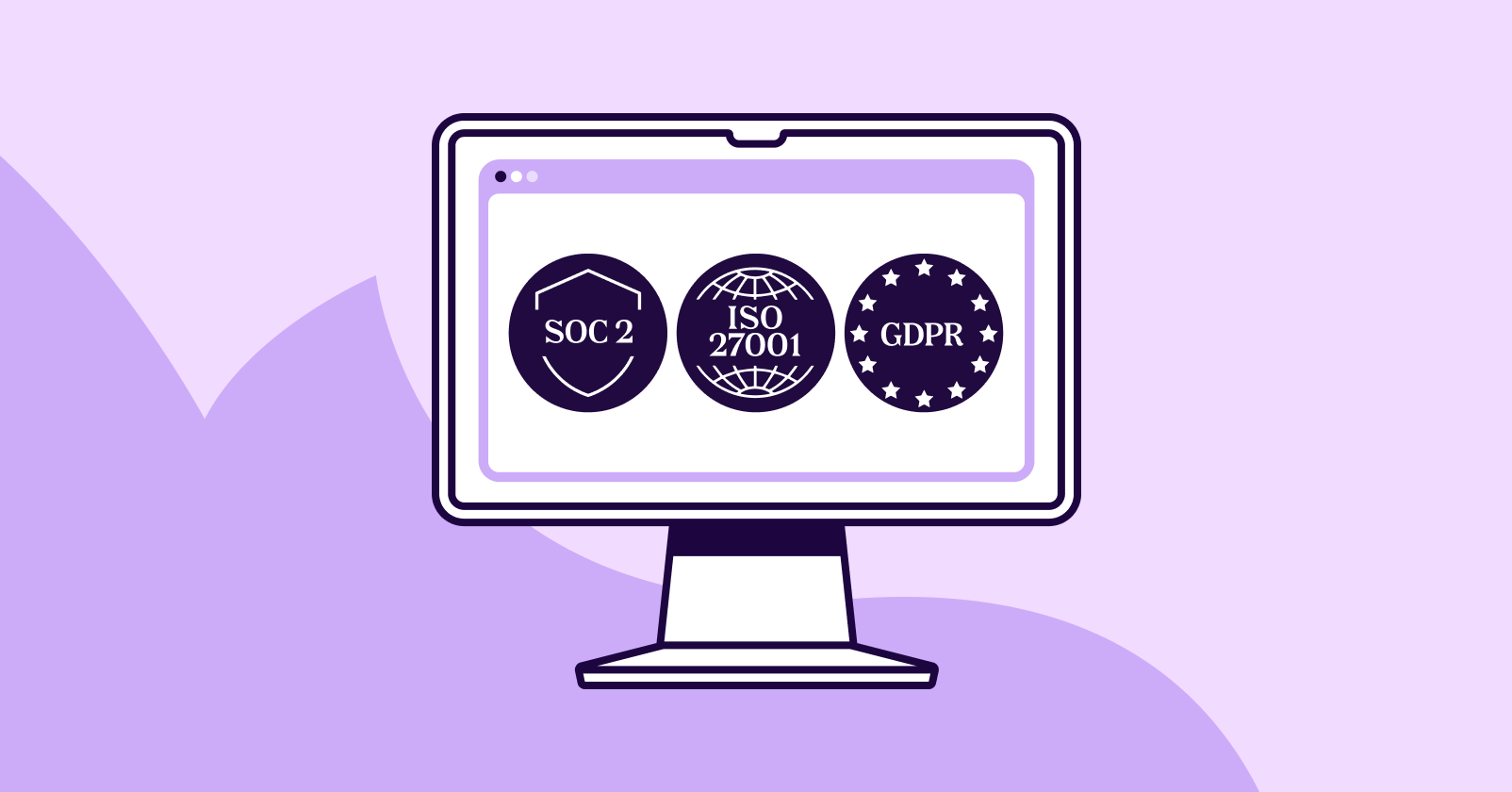Share this article

How to make your website GDPR compliant
Accelerating security solutions for small businesses Tagore offers strategic services to small businesses. | A partnership that can scale Tagore prioritized finding a managed compliance partner with an established product, dedicated support team, and rapid release rate. | Standing out from competitors Tagore's partnership with Vanta enhances its strategic focus and deepens client value, creating differentiation in a competitive market. |
GDPR, or the General Data Protection Regulation, is a data privacy law that many businesses around the world need to comply with. If you’re operating a business or managing a website, it’s important to know how the law applies to you and your website’s data collection processes. In this blog post, we’ll answer some fundamental questions about GDPR and provide guidance on how to get your website GDPR compliant.
What is GDPR and how does it impact websites?
GDPR is a law created by the European Union to protect the private data of EU residents. This law lists practices organizations must follow to protect those rights — such as transparent communication about data collection processes and giving users the ability to delete their data.
GDPR compliance applies to any organization that collects or may collect data from EU residents — which includes many of the businesses that operate around the world. While GDPR covers a wide range of privacy rights, many of these requirements focus on the data collection processes that happen on an organization’s website.
Why is GDPR compliance important for your website?
If your website requires GDPR compliance, you’re legally obligated to follow all the requirements of the law. If your website is not GDPR compliant, you could be subject to heavy fines of up to €20 million or 4% of your global revenue, whichever is higher.
In addition to avoiding these hefty fines, there are other benefits to GDPR compliance:
- Expanding into new regions: If you’re looking to expand your business into the global market and specifically into Europe, your website and business will need to be GDPR compliant. By having a GDPR-compliant website, you’re able to expand your business to the European market.
- Gaining and keeping trust: It’s important to build trust with customers and prospects. A GDPR-compliant website protects their data and respects their rights, which helps you build and maintain trust.
- Strengthening your data security: Part of GDPR compliance is putting security measures in place to protect your customer data from unauthorized access. Implementing these measures will improve your organization’s data security in addition to protecting your customer’s data privacy rights.
- Opening additional opportunities: Many partners and vendors may require your organization to be GDPR compliant before they’re able to do business with you. By being GDPR compliant, you’re open to new business opportunities that require compliance with this law.
{{cta_withimage14="/cta-blocks"}}
Does my website need to be GDPR compliant?
If your website collects or may collect data from EU residents, you must be GDPR compliant. To understand if this law applies to your business, ask yourself the following questions:
- Does your website collect data from any of its users?
- Is your website accessible to EU residents?
If the answer to either of these questions is yes, you must be GDPR compliant.
How to make your website GDPR compliant
Follow these eight steps to make sure your website is compliant with GDPR:
1. Assess GDPR compliance status
If you’re legally required to be GDPR compliant, the first step is to assess how your website currently stacks up against the compliance requirements to understand which you meet and which ones you don't yet meet.
Do this by conducting a GDPR assessment. The most efficient way to do this is with compliance software that scans your security controls, your website, and its operations against the GDPR requirements. This tool will help you identify areas of non-compliance to see where you need to make changes to your website and its security measures.
2. Add requests for permission where necessary
GDPR requires that websites switch from implied consent to specified consent. Implied consent is the idea that users implicitly agree to an organization’s data collection processes simply by being on the business’ website. Specified consent occurs when users explicitly opt-in to data collection processes. With GDPR, users must provide specified consent to your data collection processes.
If you’re using cookies or gathering any additional data that users don’t purposefully provide, you need to let them know of this process and give them a way to opt-out as soon as they get to your site. If you’re using any of this data from web sources, such as surveys or forms, you must gain consent before adding them to a mailing list.
3. Add data collection information to your site
GDPR also gives users the right to know what’s being done with their data. This means your business must disclose:
- What data you’re collecting
- How you’re using this data
- How you’re processing the data
- Who can access this data
- Who you’re sharing the data with
You can include this information in the terms of service or a privacy policy page or you can create a new page or document with these details somewhere on your site.
4. Investigate any third-party apps, plug-ins, or tools
Many websites use third-party components in some way — such as analytics or tracking tools, plug-ins to implement certain features and designs, or a third-party chat service. As part of your GDPR compliance, you must ensure the tools you’re using to collect, process, or store data are also GDPR compliant.
5. Create a way to get in touch
GDPR guarantees users certain rights regarding their data, such as the right to request all the data you have about them and the right to request that you delete all of their data. Users need to be able to contact your organization to act on their rights. Within your GDPR policy, include the contact information of your data officer so users know who to reach out to with these requests.
6. Update your data security
To be GDPR compliant, you need to protect the user data you collect or process from unauthorized access and misuse. As part of your compliance, implement data security measures that manage access. This can include tools and precautions like:
- Access controls
- Specific employee IDs
- Anti-virus software
- Firewalls
7. Develop policies for GDPR compliance
GDPR guarantees that users have certain data privacy rights, which will require you to manage and act on the requests of your users. These include:
- Requests to see all the data you have about them
- Requests to delete all of their data from your servers
- Requests to correct their data
To be compliant, you need a GDPR policy that outlines your protocols and processes for addressing these requests. You also need policies regarding potential data breaches, like protocols for addressing a breach and notifying users that their data was compromised.
8. Confirm and document your GDPR compliance
If you’ve followed the steps above and addressed all of your compliance gaps, your website should now be GDPR compliant. Now you need to confirm and document your GDPR compliance.
Use a compliance automation tool to scan your website and ensure it is GDPR compliant. This thoroughly documents your compliance with each GDPR requirement to ensure that you’re adequately protecting your users’ data and protecting your business from the consequences of non-compliance.
Additional tips for maintaining GDPR website compliance
Here are some tips for maintaining your GDPR website compliance:
Assign a data protection officer (DPO)
When a company falls out of compliance with GDPR or another standard, it’s often because you made changes to your system or a tool you use made changes. You can make monitoring this easier by designating a data protection officer (DPO).
Your DPO is the person in your organization who is in charge of protecting your user’s data. With a project lead, your compliance work will be more unified and organized so that everything is properly monitored and delegated.
Use HTTPS for data encryption
Encrypting your web traffic can strengthen your data protection as part of your GDPR compliance. You can do this by converting your website from HTTP to HTTPS, an encrypted and trusted protocol.
Create a data breach response plan
While GDPR includes provisions to help you lower your risk of a data breach, these controls can’t always prevent them entirely. You need a response plan in the event of a data breach that includes a way to notify users who may have been impacted by the data breach.
Maintain GDPR compliance with automation
The most reliable and effective way to maintain GDPR compliance is to use compliance automation. These tools provide continuous monitoring of your systems and notify you if an area of your website or infrastructure has fallen out of compliance so you can mitigate them quickly.
Get GDPR compliant faster with Vanta
Your website is a core part of your GDPR compliance and the steps above will help you protect the rights of your users and reduce your risk of incurring steep fines and other consequences from not complying.
Vanta can help you get GDPR compliant quickly. Our platform will guide your team through the entire GDPR compliance process and automate your manual processes to help your organization significantly reduce GDPR costs. Learn more about using Vanta for GDPR compliance by requesting a demo.
{{cta_simple19="/cta-blocks"}}





FEATURED VANTA RESOURCE
The ultimate guide to scaling your compliance program
Learn how to scale, manage, and optimize alongside your business goals.



















-min.png)







.svg)
.svg)
.png)
.png)
.png)